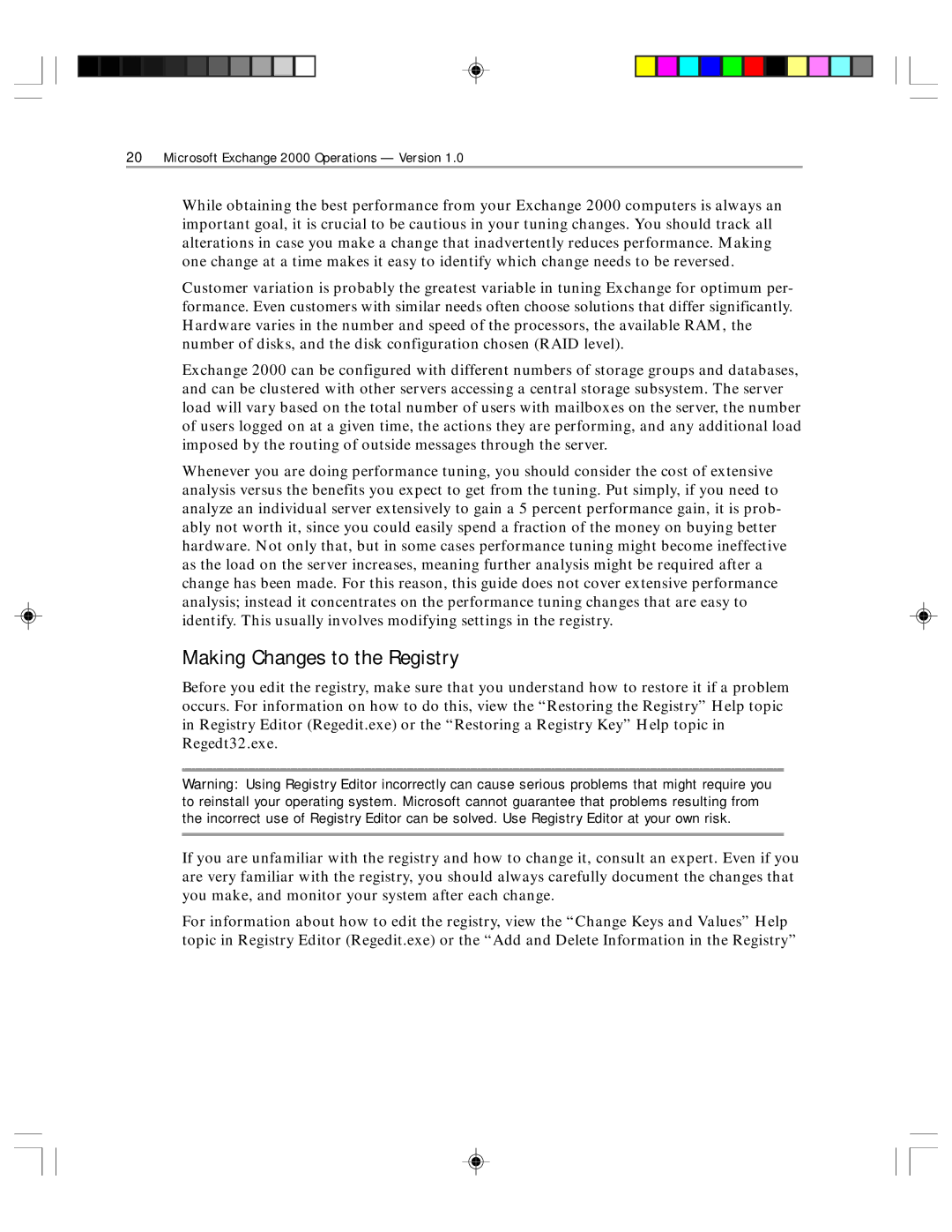
20Microsoft Exchange 2000 Operations — Version 1.0
While obtaining the best performance from your Exchange 2000 computers is always an important goal, it is crucial to be cautious in your tuning changes. You should track all alterations in case you make a change that inadvertently reduces performance. Making one change at a time makes it easy to identify which change needs to be reversed.
Customer variation is probably the greatest variable in tuning Exchange for optimum per- formance. Even customers with similar needs often choose solutions that differ significantly. Hardware varies in the number and speed of the processors, the available RAM, the number of disks, and the disk configuration chosen (RAID level).
Exchange 2000 can be configured with different numbers of storage groups and databases, and can be clustered with other servers accessing a central storage subsystem. The server load will vary based on the total number of users with mailboxes on the server, the number of users logged on at a given time, the actions they are performing, and any additional load imposed by the routing of outside messages through the server.
Whenever you are doing performance tuning, you should consider the cost of extensive analysis versus the benefits you expect to get from the tuning. Put simply, if you need to analyze an individual server extensively to gain a 5 percent performance gain, it is prob- ably not worth it, since you could easily spend a fraction of the money on buying better hardware. Not only that, but in some cases performance tuning might become ineffective as the load on the server increases, meaning further analysis might be required after a change has been made. For this reason, this guide does not cover extensive performance analysis; instead it concentrates on the performance tuning changes that are easy to identify. This usually involves modifying settings in the registry.
Making Changes to the Registry
Before you edit the registry, make sure that you understand how to restore it if a problem occurs. For information on how to do this, view the “Restoring the Registry” Help topic in Registry Editor (Regedit.exe) or the “Restoring a Registry Key” Help topic in Regedt32.exe.
Warning: Using Registry Editor incorrectly can cause serious problems that might require you to reinstall your operating system. Microsoft cannot guarantee that problems resulting from the incorrect use of Registry Editor can be solved. Use Registry Editor at your own risk.
If you are unfamiliar with the registry and how to change it, consult an expert. Even if you are very familiar with the registry, you should always carefully document the changes that you make, and monitor your system after each change.
For information about how to edit the registry, view the “Change Keys and Values” Help topic in Registry Editor (Regedit.exe) or the “Add and Delete Information in the Registry”
